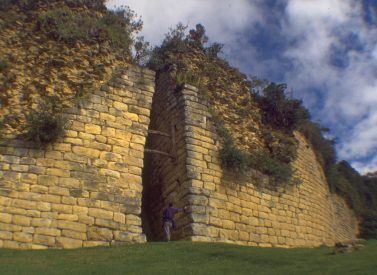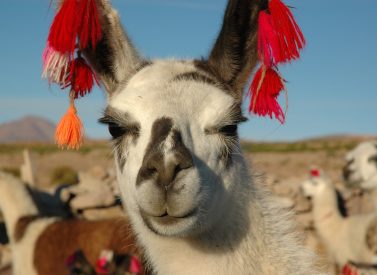
Peru Highlights Holiday
Visit the best sites in Peru with our highlights holiday.
Lima, Colca Canyon, Lake Titicaca, Cusco and finally the Inca Trail trek to Machu Picchu.
This expertly crafted itinerary maximises your time so you can experience as much of Southern Peru as possible.
You’ll see condors, stay with the communities on Lake Titicaca as well as visit Machu Picchu, with the chance to add on Amazon rainforest tours and more.
We can offer the tour as part of a group, or tailor make it to your exact needs as a private itinerary.
More on Peru Highlights holidays
We fly first to the colonial city of Arequipa and the dramatic landscapes of the Colca Canyon. This canyon is one of the deepest in the world and a great place to spot the Andean condors.
Next is a stunning bus journey – with stops – through the high altiplano to Puno. This bustling port is our access point to Lake Titicaca, the world’s highest navigable lake.
We make a two-day lake trip back in time to visit the Indians of Taquile and Amantani Islands, one of Peru’s unique and most beautiful natural wonders.
Cusco and the Inca Trail
Next we continue to Cusco, the heart of the Inca Empire and hub of activity for local highland Indians trading in today’s busy markets.
Now well acclimatised, we set out from Cusco for the Inca Trail. This stunning four day trek along the royal road leads us to the enigmatic site of Machu Picchu.
You can fly back home, to Lima or the Amazon, or try any in a series of treks we offer.
Trip Highlights
Print Share Download as PDF-
Visit the top highlights of Peru during your holiday.
-
The city of Arequipa, made of white volcanic rock.
-
Colca canyon and the Andean Condors.
-
Lake Titicaca and the Uros floating islands.
-
The altiplano of southern Peru.
-
Historic highland city of Cusco.
-
Classic four-day Inca Trail to Machu Picchu.
Thanks for everything! I will definitely recommend Andean Trails and the organisation of the Luxury Inca Trail was top notch!
Stacey Schmidt, Peru holiday
Full Itinerary
Day 1: Arrive Lima, transfer into hotel
Join the tour in Lima.
Day 2: Transfer to airport, fly to Arequipa, transfer to hotel (B)
We take an early flight to the colonial city of Arequipa (2,325 metres/7,628ft), which sits at the foot of three tremendous volcanoes: El Misti (5,821m/19,098ft), Chachani (6,075m/19,931ft) and Pichu Pichu (5,542m/18,182ft). The city is built of earthquake-resistant sillar, a white pumice stone.
We take an early flight to the colonial city of Arequipa (2,325m/7,628ft), nestled at the base of three impressive volcanoes: El Misti (5,821m/19,098ft), Chachani (6,075m/19,931ft), and Pichu Pichu (5,542m/18,182ft). The city is constructed using sillar, a white pumice stone that is both beautiful and earthquake-resistant.
Arequipa boasts a wealth of attractions and serves as an excellent base for exploring the dramatic Colca Canyon. With its temperate year-round spring climate and over 300 days of sunshine annually, it is the ideal location to begin acclimatizing before ascending to higher altitudes.
Human activity in the Arequipa region dates back 6,000–8,000 years, with early inhabitants living as hunter-gatherers. In the 7th century, the Huari culture influenced the area, followed by the Tiahuanaco culture in the 10th century, and later the Incas.
During the 17th and 18th centuries, Arequipa flourished due to silver mining in Potosí, Bolivia, and alpaca wool exports to Britain in the 19th century. The city is home to remarkable colonial-era sillar structures, including the renowned Santa Catalina Convent, a “mini-city” within Arequipa.
Officially founded by the Spanish in 1540, Arequipa is now a thriving commercial hub with a population of approximately 650,000 residents.
On arrival choose a city tour or wander this lovely city independently, with many places to enjoy.
Day 3: Tour to Colca Canyon, hotel (B)
You will be picked up from your hotel and begin your journey through the Colca Valley, passing the Pampas Cañahuas, where you may spot vicuñas, the South American camelids.
Our first stop is Patapampa (4,800m/15,748ft), offering stunning panoramic views of the surrounding volcanoes. From here, we continue on to Chivay, where you’ll have the opportunity to relax in the thermal baths at Clera in the afternoon. Tonight, stay in one of the hotels in Chivay, with accommodation options ranging from cozy lodges to luxurious spas, depending on your preferences and budget.
The head of the Colca Valley sits at an altitude of about 4,000m/13,123ft above sea level, where little vegetation grows and the land is primarily used for grazing. As we descend towards Chivay (3,633m/11,920ft), the terrain becomes more suitable for farming, with traditional agricultural terraces dotting the landscape.
Just a few kilometers from Chivay, the valley begins to narrow, steepening into the awe-inspiring Colca Canyon, which reaches an average depth of 3,400m/11,155ft and stretches for over 100km.
Evidence of human habitation in this area dates back thousands of years, but the landscape as we see it today was shaped by the pre-Inca Collagua and Cabanas cultures. These skilled agriculturalists developed the elaborate irrigation canals and terraces still in use today.
The people of the Colca region worshipped mountain spirits, with Hualqa-Hualqa (6,075m/19,931ft) revered for its power to control the waters flowing into the valley.
Today, Colca remains one of Peru’s premier agricultural regions, producing some of the finest crops, with volcanic peaks such as Coropuna (6,425m/21,079ft) and Ampato (6,320m/20,735ft) bordering the canyon. To the north lies the Cordillera Chila, home to Mismi (5,596m/18,360ft), the peak believed to be the source of the Amazon River.
The Colca Canyon is an incredible 100km long and reaches depths of up to 3,400m/11,155ft, making it twice as deep as the Grand Canyon. Formed by a fault in the earth’s crust and shaped over thousands of years by the Colca River, this vast gorge remained largely unknown until 1954, with major explorations beginning in 1978 and the first descent by raft in 1981.
Scenic villages line both sides of the canyon, and the locals, who still live according to ancient traditions, will gladly assist with directions. Cave paintings indicate human presence in the area since the earliest inhabitants arrived in the Andes.
The iconic terraces of the Colca Valley, carved into the land over 1,400 years ago by the pre-Inca Collaguas and Cabanas peoples, rival the famed terraces of the Incas. These advanced agricultural techniques are still in use today, and the valley remains a rich source of diverse crops, including potatoes, corn, quinoa, maca, oca, and isaño. Many locals continue to wear their distinctive, vibrant traditional clothing.
Day 4: Condor viewing, Colca Canyon hotel (B)
We depart early to reach Cruz de Condor (3,800m/12,467ft), where we can observe the majestic Andean condors soaring on the thermals.
Despite their weight of 10 to 12 kilograms, these impressive birds, with wingspans exceeding three meters, exhibit incredible flight efficiency. With minimal wingbeats, they can glide to great heights and cover vast distances. The Colca Canyon is one of the rare places where you can get close-up views of these magnificent birds.
Afterward, the rest of the day is yours to relax, continue observing more condors, or shop for souvenirs.
Day 5: Bus via altiplano to Puno, transfer to Puno hotel (B)
The altiplano is a vast highland plateau that stretches across both Peru and Bolivia. The landscape is sparse, with few trees, vast stretches of ichu grass, roaming herds of llamas and alpacas, and scattered potato fields.
On our scenic bus journey from Chivay to Puno, we cross high mountain passes and pass through wetlands teeming with Andean geese, making stops to admire the dramatic mountain scenery. At some of the lakes along the route, there’s a good chance to spot flamingos.
Lake Titicaca, the centerpiece of Peru’s altiplano, is an extraordinary deep blue lake situated at 3,838m/12,592ft. It holds a unique allure and is home to many indigenous communities living on its islands and along its shores.
We continue by bus to the lively lakeside town of Puno, which serves as the main gateway for visits to the islands on the Peruvian side of the lake.
Day 6: Transfer to port, overnight visit to Amantani, homestay (B,D)
We begin early and head to the lively port of Puno to embark on a journey across the world’s highest navigable lake. Our first stop is the remarkable floating islands of Uros. Here, we disembark and explore these unique islands, learning about how the people live and construct their homes. You’ll also have the opportunity to purchase high-quality woven goods and even sail in one of the traditional reed boats.
Next, we continue our journey to Amantani Island.
For those staying overnight, a village elder will assign your host family for the night. You’ll then have free time to explore the island’s trails and immerse yourself in the rich culture of this fascinating community.
Day 7: Return to Puno via Taquile, transfer to hotel (B)
After a leisurely morning, you’ll board the boat for the return journey to Puno, stopping at Taquile Island along the way.
We arrive in Puno by mid-afternoon, giving you the evening to explore the lakeside town at your own pace.
Day 8: Transfer to station for bus to Cusco, arrival transfer to hotel (B)
Today, we travel by train or bus across the altiplano to Cusco.
Along the way, we reach a high pass at 4,300m/14,108ft before descending into the lush, fertile Vilcanota Valley. As we approach Cusco, we enter the Huatanay Valley, traveling the final stretch into the city.
Known as the archaeological capital of South America, Cusco and its surrounding region are rich in cultural and historical treasures that rival any in the Old World.
Cusco is not only a city of historical significance but also a vibrant, exciting destination with a wide array of restaurants and a lively nightlife scene. While tourism is now the city’s main economic driver, it also remains a key market town for the surrounding farming communities, with street markets offering a vast range of highland and jungle products.
The city itself is a beautiful blend of Inca stonework and elegant Spanish colonial architecture. According to legend, Cusco was founded around AD 1100 by Manco Capac, the first Inca king, and his sister-queen, Mama Ocllo, who were sent by the Sun god (Inti) and the Moon goddess to earth at Lake Titicaca to civilize humanity. Their journey led them to Cusco, where Manco Capac plunged his staff into the ground, marking the founding of the Inca Empire’s capital.
Archaeological evidence suggests that for several centuries, the Inca tribes stayed close to Cusco, with little interest in expansion. It wasn’t until the reign of Pachacutec, the ninth Inca Emperor, in 1438, that the Inca Empire began its dramatic expansion, making Cusco the heart of a vast empire.
Pachacutec also oversaw the design of Cusco as the imperial capital, with Huacaypata, the large central plaza, serving as the site for important ceremonies. The city was surrounded by the luxurious palaces of Inca kings, and the characteristic interlocking stonework of Inca structures can still be seen today.
When Francisco Pizarro and the Spanish conquistadors arrived in Peru, Cusco was the thriving capital of the Inca Empire. However, a civil war within the ruling family made the conquest relatively easy for the Spanish. Though they were awestruck by the grandeur of Cusco, the Spanish soon looted the city for its treasures.
From Pizarro’s arrival until 1572, Cusco witnessed numerous battles of native resistance, as well as power struggles between the colonists. Manco Inca, appointed by the Spanish as ruler, soon recognized he was a puppet and led a rebellion against the city in 1536. Despite a valiant siege, the Spanish broke free and reclaimed Cusco. The Incas retreated to Vilcabamba, in the remote mountains to the north.
The last Inca leader, Tupac Amaru, was captured by the Spanish and executed in Cusco in 1572, marking the end of Inca resistance.
Day 9: Free day In Cusco, hotel (B)
Free day in Cusco.
Day 10: Inca Trail: Transfer from Cusco, trek to Huayllabamba (12km trek) (L,D)
We pick you up early from your hotel in Cusco, gathering all other trekkers before embarking on a scenic bus ride. The journey takes you through the highland villages of Chinchero, Urubamba, and Ollantaytambo, offering stunning views of the Cordillera Urubamba mountain range and the snow-capped peak of Veronica (5,860m/19,225ft). The drive lasts about three hours and is a perfect introduction to the breathtaking landscapes that await.
Most of our groups consist of up to 16 trekkers, guided by an experienced English-speaking leader and an assistant guide. Our trekkers come from all over the world, with a wide range of ages.
We begin the trek at Chilca, where we head down to the trailhead. After your tickets are checked and signed in, we cross the bridge and follow the path gently along the riverbank. Soon, we begin the gradual ascent through a eucalyptus grove towards Llactapata, the first significant archaeological site along the trail. The ruins here feature impressive retaining walls that have transformed the steep hillside into expansive agricultural terraces, offering an extraordinary sight.
Just below Llactapata, the Río Cusichaca, a tributary of the Urubamba River, plunges dramatically into the earth, running through a subterranean channel for some distance. The trail then climbs steeply from the ruins over a low pass, marking the start of our hike up the valley.
After about an hour, you cross a bridge that brings you to the other side of the valley. Another half hour of walking will bring you to the village of Huayllabamba (3,000m/9,843ft), where you will be greeted with refreshing cold drinks, a welcome relief after the heat of the day.
The first night will be spent camping at Huayllabamba, where basic facilities are provided.
First night camp with basic facilities.
Distance: 11.1km/6.9 miles
Highest point: 2,912m/9,554ft
Starting altitude: 2,753m/9,032ft
Finishing altitude: 2,885m/9,466ft
Height gained: 398m/1,306ft
Height lost: 302m/991ft
Day 11: Inca Trail: Huayllabamba to Pacamayo (12km) (B,L,D)
After breaking camp, we set out with our sights firmly set on the day’s main challenge – Dead Woman’s Pass.
Our route begins through the woods, starting with scrub and then transitioning into the enchanting cloud forest, where trees are draped in moss, creating a magical, fairy-tale atmosphere. The lush surroundings may help distract from the relentless uphill climb, with no sign of a break in sight.
As you ascend, the trees gradually become shorter and more sparse, leading you to Llulluchapampa, a meadow where the path levels out. The journey from The Forks to this meadow takes about two hours. This marks the last campsite before reaching Abra de Huarmihuañusqa, or Dead Woman’s Pass (4,198m/13,773ft), which lies ahead.
From here, it’s another 90-minute climb to the top of the pass – the highest point on the trail. Conquer this, and you’ll be ready for any of the other passes ahead. Take a moment to admire the panoramic views, and you’ll spot the circular ruins of Runkuracay just below the next pass.
The descent is steep, but manageable. Follow the trail along the left side of the valley, leading you down to the valley floor and our next campsite at Pacamayo (3,600m/11,811ft).
There are a few basic huts nearby, equipped with toilets and sinks, built by the INC. We’ll camp here for the night, resting after a challenging but rewarding day.
Camp for the evening.
Distance: 12.3km/7.7 miles
Highest point: 4,222m/13,852ft
Starting altitude: 2,885m/9,466ft
Finishing altitude: 3,603m/11,821ft
Height gained: 1,361m/4,465ft
Height lost: 613m/2,011ft
Day 12: Inca Trail: Pacamayo to Wiñay Wayna (15km) (B,L,D)
From Runkuracay, the path becomes clearer as we ascend to the second pass, Abra de Runkuracay (4,000m/13,123ft). Excitingly, much of the trail follows original Inca steps. The descent can be steep, so it’s important to proceed with caution.
Just before the trail turns to the right, you’ll see a sign for Sayacmarca. Located about an hour from the top of the pass, the name translates to ‘the Inaccessible or Secret City,’ which is fitting. You’ll approach Sayacmarca via a beautifully crafted stone staircase. While the main trail continues its gradual descent to the right, it’s worth making this detour – don’t let fatigue cause you to miss it.
As with many Inca sites, the true purpose of Sayacmarca remains a mystery. However, its features are remarkable: it sits on a precipice offering sweeping views, it lacks agricultural terraces, so it likely didn’t support many inhabitants, and it boasts ritual baths and an aqueduct running around its main wall. The curious stone rings set into the wall, paired with trapezoid openings, add to the intrigue. Whether or not you uncover the full story, the beauty of this site is undeniable.
The trail continues down to the valley floor, transforming into a stunning Inca road. Raised above the marshy ground, this road is paved with stones and bordered by cloud forest. The well-maintained stone steps and gentle gradient make for easy walking, and even if it rains, you’ll be in awe of the Inca engineering.
Before the ascent to the third pass, there is a campsite with basic toilet facilities. As you climb, you’ll pass through two Inca tunnels, and on clear days, you’ll be treated to views of Salkantay on your left. The pass itself (3,700m/12,139ft) also offers a camping spot, though it tends to get crowded, and water sources are a bit lower down.
A couple of hours after leaving Sayacmarca, you’ll reach the impressive ruins of Phuyupatamarca. These ruins can be accessed via a steep flight of stairs. Water channels carved into the rock run through the site, feeding five baths that cascade down the hill. You may camp here if you choose.
An Inca staircase descends from the west side of the ruins, disappearing into the jungle. This stairway leads down a thousand steps—an intense but rewarding descent, though it might leave your knees feeling the strain.
Finally, the trek brings you to the campsite near the ruins of Huiñay Huayna (Wiñay Wayna), the last stop before Machu Picchu. It’s a popular spot, so it can get crowded. The campsite has basic facilities, including toilets and running water.
Just below the campsite, you’ll find Huiñay Huayna, a large and well-preserved ruin that sits in an incredibly scenic location. The site is known for its impressive stonework and beautiful setting, and its mysterious atmosphere offers a contrast to the more crowded Machu Picchu.
Distance: 12.9km/8 miles
Highest point: 3,893m/12,772ft
Starting altitude: 3,603m/11,821ft
Finishing altitude: 2,732m/8,962ft
Height gained: 1,185m/3,888ft
Height lost: 1,345m/4,413ft
Day 13: Inca Trail: Huiñay Huayna to Machu Picchu (5km), hotel in Cusco (B)
Distance: 7.9km/4.9 miles
On arrival at Machu Picchu, you’ll have ample time to take photographs of this breath-taking site. Afterward, we’ll walk through the ruins to the main entrance, where you can leave your backpacks in a secure area. There are also restrooms and a restaurant just outside the entrance where you can grab a drink.
We’ll then re-enter the site for a guided tour, covering the major sectors of Machu Picchu. The tour typically lasts around two hours, and by mid-morning, you’ll have free time to explore the ruins on your own.
The train back to Cusco departs from Aguas Calientes, the nearest town to Machu Picchu, at approximately 16:30, and you’ll return to Cusco around 21:00. To ensure you have enough time to explore the site, we recommend taking the bus down to Aguas Calientes no later than 15:30 (times may vary, so check with your guide). Buses run every 15 minutes.Aguas Calientes offers a wide variety of restaurants catering to all tastes and budgets. For relaxation, you can also visit the local hot springs, which are famous in the area and a great way to soothe any sore muscles after the trek. The entrance to the hot springs is US$5, and we suggest setting aside a couple of hours to enjoy them fully.
Highest point: 2,739m/8,988ft
Starting altitude: 2,732m/8,962ft
Finishing altitude: 2,452m/8,046ft
Height gained: 311m/1,020ft
Height lost: 377m/1,237ft
Regulations (August 2011) mean that the number of visitors to Machu Picchu is limited to 2,500 people per day. This means that you must pre-book your entrance to the site. The entry ticket cannot be purchased in Aguas Calientes/Machu Picchu pueblo but must be bought in advance (by us) in Cusco.
On the 5 day Inca Trail if you wish to visit the site on your last day (day 5) you will need to reserve and pay for your entrance ticket at the time of booking. The cost is USD 80 per person.
If you wish to climb Huayna Picchu or Machu Picchu mountain, places now also have to be pre/booked and come at an additional cost.
Machu Picchu mountain has to be climbed before 11am, and there are two departure times for Huayna Picchu:
Group 1 (G1): 0700 – 0800
Group 2 (G2): 1000 – 1100
The price is USD 80 including the entrance fee to Machu Picchu.
Day 14: Free day Cusco, hotel (B)
Enjoy a free day in Cusco.
If you’re looking for something more adventurous than shopping, you have the option to go white water rafting on the Urubamba River for an exciting day out.
Day 15: Transfer to airport, fly to Lima, tour ends (B)
Today we fly down to Lima, where the tour ends .
Prices From $2,292 / £1,863 per person
What's Included?
Meals as listed (B = breakfast, L = lunch, D = dinner), tour leader, accommodation (hotels 10 nights, family house 1 night, camping 3 nights), transfers as listed, Colca Canyon trip, Lake Titicaca trip, standard Inca Trail trek, buses and trains as listed.
What's Not Included?
International and domestic flights (we can look for prices for you), insurance, tips, other meals, snacks and drinks, laundry, tips, personal items.
Accommodation
Mixture of hotels, camping and Lake Titicaca homestay.
Hotels are 2-3* with private bathrooms.
Homestay on Lake Titicaca is basic, with some flush toilets but no showers. Rooms can be shared by 4-8 people. Beds have lots of blankets. If staying on Uros, you stay on a floating island in a woven house – real experience – it can be cold at night.
Camping
We use four season tents, designed for all weather conditions, and with lots of space for you and your belongings.
If you travel solo and have a tent to yourself, it will be 2m long x 1.4m wide – a two person tent.
Those sharing a tent will be in a tent 2.2m long x 2m wide – a four person tent.
If you stay an extra night in Aguas Calientes, we add a 2* hotel but can book 3, 4 and 5* options on request (extra cost).
Toilet facilities on the standard trek
All of the campsites that we use have a toilet block with running water. Facilities have improved a lot on the Inca Trail in the last few years. If you do need to go the toilet when there aren’t any toilets then do so well away from the trail and water supplies; dig a hole, and take the paper with you in a bag to deposit in one of the several bins along the way, do not leave it to blow about in the wind. There are shower facilities at Wiñay Wayna on day 3 although these basic and most people wait until Aguas Calientes showers or their hotel in Cusco.
Tour Staff
Tour leader throughout the tour, a local, bilingual Peruvian guide with many years’ experience. You will also meet local guides with specialist knowledge at certain points (e.g. Inca Trail).
Inca Trail
In Cusco you will meet Jesus Sucari, our local man on the ground, and he’ll answer any questions with a pre-trek briefing.
We operate the Inca Trail together with our Cusco partner, owned and managed locally, in accordance with Inca Trail regulations.
On the Inca Trail we employ local staff, who are paid fair wages. We provide free life insurance to all of our porters. Tented accommodation and meals are provided for all trekking staff as well as foam mats, sleeping bags and rain ponchos.
We have also provided the staff with trekking shoes. We try to ensure our porters carry a maximum of only 20kg. We offer them backpacks and they generally use back supports.
Additionally, each year we donate to the communities our Inca Trail porters come from. We ask the community what is most needed and usually we are asked to provide materials (books, pencils, paper etc.) for the children and the local school.
Most of the porters are farmers and cannot afford to pay for all of the materials their kids require for school. By trekking on the Inca Trail you are directly helping the families and communities of your porters.
Meals
Almost all dietary requirements can be catered for – please ask us for more information.
Breakfasts at hotels will feature teas, coffees and juices to drink, plus cereals, fruit, eggs, toast and jams etc.
While out on tours, we either supply a packed lunch of sandwiches, snacks, soup, fruit etc, or we eat at a local restaurant. These are often buffet style with soups, rice, pasta, potatoes and then puddings/fruit. Lake Titicaca features lots of fish and/or eggs.
Evenings are often free for you to choose to eat in a local restaurant. Bigger towns have international and local Peruvian options.
Inca Trail
Standard menu
A typical day’s menu would be something along the following lines:
Snack: Mandarins and granola bar
Breakfast: Porridge , bread, butter, jam, milk, coffee, tea, fruit juice and fruit salad.
Lunch: Wantan (deep-fried pastry filled with cheese and ham), quinoa soup, chicken with stir fried rice, corn salad
Afternoon tea: Biscuits, pop corn, coffee, tea, infusions.
Dinner: Vegetable soup, meatballs with gratin potatoes and rice, salad selection and swiss chard pie, fried bananas.
Special dietary requirements
People with special dietary requirements are well catered for. A typical day of vegan fare on the standard Inca Trail could be:
Breakfast: Corn bread, fruit salad, soya yoghurt, quinoa flakes, hot drinks.
Lunch: Vegetable soup; broad bean, carrot, mushroom and seaweed salad with “sancochadas” potatoes. Hot drinks.
Dinner: Vegetarian minestrone soup, sautéed green beans with soya meat, vegetables and rice, poached apples. Hot drinks.
Celiacs/gluten free diets are catered for by replacing rice and pasta with quinoa, canihua and quiwicha as well as special produce such as camote (sweet potato) bread.
Water on the trail
You will be provided with boiled water every morning, and evening – fit for drinking. There are always generous amounts available.
The sterilising tablets ‘MicroPur’ can be bought in most pharmacies in Cusco. With these you put the tablets in the water and then wait 40 minutes before drinking. Try to ensure that the mouth of the bottle is also fully sterilised, by tipping your bottle up and down and allowing sterilised water to flow out before you drink.
Activity Level
The majority of the trip is open to people of good mobility and health. We build in acclimatisation, and the first tours are not physically strenuous.
The Inca Trail requires every participant to be well acclimatised to high altitude and to be in good physical condition.
We grade this as a ‘medium’ trek because of the high altitude and consecutive trekking days.
Trekkers ideally need to be used to walking while carrying a rucksack and ideally accustomed to walking several days in a row.
However, it is also open to first time trekkers who are in good physical shape.
Approximate walking times:
Day 1: 4-5 hours
Days 2 + 3: 5-7 hours
Day 4: 1 hour + tour (2 hours)
Practical Information
Introduction to Peru
Peru is the perfect holiday destination for adventure travellers that want an amazing variety of activity, geography and cultural travel experiences.
The breadth of travel experiences in Peru is breathtaking – from trekking in the Andes to Machu Picchu to the tropical jungle of the Amazon, and plenty in between.
The people of Peru make it a special destination too, with its colourful and traditional street life and friendly locals.
Geography of Peru
Peru is made up of 3 distinct geographical areas: the coast, the mountains and the jungle.
The costa or coastal region is a narrow ribbon of desert 2,250 km long, crossed by fertile river valleys flowing from the Andes. It takes up 11% of the country and holds more than 40% of the population.
The cold Humboldt current gives rise to a blanket of mist – the garua – which hangs above coastal cities like the capital Lima from May to November.
Heading east, you’re soon climbing above the garua and into the Andes. The sierra, or mountainous region, covers some 25% of Peru’s territory and contains 50% of the population. The sierra inhabitants are mainly Indigenous or Mestizo, and many still speak Quechua or Aymara.
The sierra contains dozens of 6,000-metre snow peaks and volcanoes, including Huascaran (6,768m) the highest mountain in the tropics. The deep valley basins contain most of the towns and arable land; the terracing and canal systems of the Incas and pre-Incas are often still used today.
The eastern Andes are heavily forested up to 3,350m and sweep down into the Amazon Basin.
Peru’s selva or jungle makes up almost two thirds of the country’s area, but holds only about 6% of the population: the only towns with significant populations are Iquitos and Pucallpa.
Weather in Peru
You can also read about the weather of Peru in our blog.
Peru is located in the southern tropics (latitudes 0º to 18º), but climate varies significantly according to season, altitude and region.
Lima & the coast
From May to October, Lima is often overcast, but with minimal precipitation. There are sunny spells, and it’s a fresh to pleasant 13-20ºC.
At the same time, inland areas and the north coast mid to high 20’s ºC.
November to April is generally warm and sunny and Lima enjoys warm temperature of 19-25ºC, with the coast averaging 22-30ºC.
The Andes
Climate depends largely on altitude. As a rule of thumb, below 2,000m climate is mild and above 2,000m warm clothing is required for evenings, nights and early mornings.
The Andean sun is very strong.
May to Oct (dry season in The Andes)
Cusco (3,300m): Average max/min temps: 22ºC /2ºC. Average 3 or 4 wet days per month.
Arequipa (2,380m): Average max/min temps: 26ºC /9ºC. Sunny more than 340 days/year with minimal precipitation.
On highland treks: Conditions are generally dry. However, at this time of year, expect a range of conditions within a single day: cold/freezing nights at camps above 4,000m, where pre-dawn temperatures can be -5ºC; warm, spring-like mornings and afternoons; and cold evenings.
Note that mountain weather can be fickle and localised, and that precipitation is not unknown in the dry season. Expect temperatures to swing between sun and shade, sheltered and exposed ground and with altitude gain and loss. A quick-setting sun means temperatures drop fast.
In the cloud forest, e.g. around Machu Picchu, daytime conditions are generally warm or hot, and evenings cool.
Nov to March/April (wet season in The Andes)
Cusco: Average max/min temps: 23ºC /6ºC. Average 13 wet days per month.
Arequipa: Average max/min temps: 25ºC /14ºC.
On highland treks: Wetter conditions, with cooler days and milder nights than dry season. Jan-Mar usually the wettest months.
The Amazon rainforest
Year-round, weather conditions are hot and humid and there is always the risk of rain
There is a ‘dry season’ in Tambopata and Manu between May and October. The average daytime high temperature is between 25°C and 34°C and the average nighttime low is between 16°C and 22°C. Heavy downpours typically occur every few days.
Around 80% of annual average rainfall – approx 2,000 mm in Manu and Tambopata and 1,400 mm in Iquitos – occurs in the wet season Nov-April.
On rare occasions, between May and September, cold fronts from Argentina – ‘friajes’ – can sweep into southwest Amazonia and push temperatures down to 9° C. (Friajes usually last between 1 and 3 days).
Kit list
Good kit is vital for every trip.
Book with Andean Trails and get 15% off Páramo’s fantastic ethical and high performance outdoor gear.
Overview
When planning for the varied climatic conditions you will encounter across Peru, layering is the most practical and versatile clothing system.
The sun is very strong throughout the country, so good sun cream, a hat and sunglasses are vital.
It can also get very cold at night time especially in the mountains. Jumpers, fleeces and warms hats – which you can buy there – are also essential.
Give plenty of thought to kit selection, and try to keep weight down.
Below is a more detailed guide.
Detailed kit list
- Medium weight parka or a down jacket.
- Waterproof jacket and trousers. The jacket needs to be water proof and roomy. Side-zip pants are recommended.
- 2-3 long-sleeve shirts – no cotton
- 2-3 short-sleeve T-shirts – no cotton
- 2 pair of hiking trousers- cotton or synthetic material (no jeans)
- 1 fleece or sweat trousers (for cold evenings)
- 2 pair hiking shorts
- Long thermals – synthetic or wool – light to medium weight top & bottoms.
- 2-3 mid-weight (wool or synthetic) socks.
- 2-3 liner socks if needed
- Athletic-type socks, several pairs, city use
- Hiking boots that are waterproof and well broken-in.
- Running/tennis shoes or sandals are very comfortable when you are in cities
- 1 lightweight wool sweater or windproof fleece
- 1 wool or synthetic warm hat.
- 1 light sun hat with a wide brim.
- 1 pair of medium-weight wool or synthetic gloves
- Broad-brimmed sunhat, essential.
- Sunglasses with UV filter.
- Scarf for cold.
- Bandanna – to protect neck from strong sun.
- Daypack (at least 30 litres). Comfortable and with waterproof lining or cover.
- Water bottle (2 litres approx.) & purification tablets.
- Personal first-aid kit to include: painkillers, plasters (band-aids), moleskin, anti-biotic cream, general antibiotics (ask your GP), after-bite (tiger balm), anti-diarrhoea tablets, throat lozenges, re-hydration salts & personal medication.
- Insect repellent (just in case)
- Towel & wash-kit.
- Wet Wipes/antiseptic hand-wash cream.
- Sunscreen (factor 30+) and lip salve.
- Head-lamp (plus spare bulb and batteries).
- Penknife.
- Travel alarm clock.
- Plastic bags – ‘Zip-loc’ & tough bin liners.
- Camera and film / memory cards (take at least twice the amount you think you will need!).
- Book, e-book, mp3 player/ipod or other to help pass the time.
- Binoculars.
- Spanish/English phrasebook.
- Extra snacks i.e. cereal bars or favourite chocolate bars.
Miscellaneous others
- Money belt.
- Passport.
- U.S. dollars cash, mixed-denomination notes, undamaged and unmarked.
- ATM cash/credit card.
- Any inoculation certificates.
- Personal & medical insurance certificates.
- Presents e.g. Postcards from home.
- Comfortable clothes for travel, smart clothes for night life.
ATOL holiday protection
Andean Trails has 25 years of experience of putting together the best South America holidays.
We pay a fee to the CAA for every licensable passenger we book since we hold an Air Travel Organiser’s Licence granted by the Civil Aviation Authority. In the unlikely event of our insolvency, the CAA will ensure that you are not stranded abroad and will arrange to refund any money you have paid to us for an advance booking.
We also offer ATOL (Civil Aviation Authority) protected holidays to give our customers peace of mind when booking and travelling.
When you buy an ATOL protected air holiday package from Andean Trails Ltd you will receive a Confirmation Invoice from us confirming your arrangements and your protection under our Air Travel Organiser’s Licence number 6275.
You can read more about ATOL, who is covered and what protections you have if not ATOL-covered, on our ATOL page.
What is ATOL?
The CAA’s ATOL scheme offers protection to your money and your holiday if you book with us. Not everybody is covered (see ‘Who is covered?’ for more), as you must purchase an ‘air package holiday’ with Andean Trails to be protected.
And ‘air package holiday’ is defined as including a flight and some ground services (hotel, transfer, trek etc). This is also known as an ‘ATOL-protected holiday’.
Who is covered?
To be covered by ATOL, you must book a flight and some ground services with us and be from the UK. If you are from the UK and only book ground services and no flights, you are not covered by ATOL (see below for more on how non-ATOL clients are covered).
If you are outside the UK and buy flights with us, you will be ATOL protected IF any of the flights booked with Andean Trails touches/stops in the UK at any point during your holiday package booked with us.
If you buy your flights elsewhere, please check with that agent if you are ATOL protected. Be careful with online flight purchases and make sure you know what protection you have, if any, before paying for flights.
Not all holiday or travel services offered and sold by us will be protected by the ATOL scheme. Please ask us to confirm what protection may apply to your booking.
For land only holidays not involving any air travel, in accordance with “The Package Travel, Package Holidays and Package Tours Regulations 1992”, all UK passengers booking with Andean Trails Ltd. are fully protected for the initial deposit and subsequently the balance of all money paid to us, arising from cancellation or curtailment of travel arrangements due to the insolvency of Andean Trails.
I’m not ATOL covered, what protection do I have?
If you are not ATOL covered, any payments you make to us go to a Trust account.
We can only access this money once your tour has been completed, meaning that if anything happens to Andean Trails Limited while you are on holiday, then your money is secure and you can either complete the trip or be able to make it home.
If you pay for your holiday with a credit card, some offer payment protection – please check with your cardholder.
You also should have cancellation protection written into your insurance (which we recommend you have at the time of booking) in case you need to cancel.
Peru’s Amazon Rainforest
Peru boasts in its Amazonian region a vast swathe of world-class tropical wilderness with several rain forest and cloud forest reserves which are home to an immense diversity of wildlife.
Accessible from Lima, Iquitos or Cusco, the Amazon jungle is just a short flight away.
In Peru’s southeast lies the extraordinary region comprising the Tambopata National Reserve and the Bahuaja Sonene and Manu National Parks, with the greatest animal and plant diversity anywhere in the world.
Whether you choose to base yourself at a comfortable lodge or enjoy a more demanding camping trip, you can be sure of a unique, exhilarating and unforgettable experience.
Arequipa & Colca Canyon, Peru
The beautiful colonial city of Arequipa is replete with history and culture, and is the gateway to the condors of Colca Canyon.
Nestled at 2,325m/7,627ft, the ‘white city’ sits at the foot of three tremendous volcanoes: El Misti (5,821m/19,098ft), Chachani (6,075m/19,930ft) and Pichu Pichu (5,542m/18,182ft).
Arequipa’s attractions include the Cathedral, Compañía de Jesús Church, Santa Catalina Convent and the Dama de Ampato (Juanita Mummy) Museum.
With a year-round spring climate and sunshine guaranteed for 300 days of the year, it is the perfect place to begin acclimatising before continuing upwards.
Nearby is the famous Colca Canyon. At hundred kilometres long, this incredible gorge is said to reach a maximum depth of 3,400m/11,155ft – twice that of the Grand Canyon.
An overnight tour to Colca gives you the chance to see the iconic, soaring condors of the canyon.
Cusco, Peru
Cusco is the archaeological and cultural capital of South America.
The one-time centre of the vast Inca Empire is a bustling highland city with bags of character.
Its whitewashed streets and plazas feature a fascinating blend of Inca and Spanish colonial stonework and offer endless possibilities for exploration.
You don’t have to venture far to find outstanding examples of high quality Inca architecture, including the monumental temple fortress of Sacsayhuaman.
There is also the fertile farming land of the Sacred Valley on the doorstep, with many Inca terraces, temples and fortresses, plus colourful local markets and small villages.
At night, Cusco offers an excellent array or restaurants and bars plus the continent’s best Andean folk music scene.
Kuelap, Peru
In the northeast of Peru lies Kuelap – the jewel in the massive archaeological crown of the Chachapoyas Cloud People.
The mystical structure of Kuelap – dubbed the Peru’s second Machu Picchu by locals – is 1,200 years old.
It features massive limestone walls towering 60 feet, pottery, bones and hundreds of mysterious round stone structures, and away from the crowds of other sites.
This is a remote area of sub-tropical valleys, half way down the eastern slopes of the Andes. The jungle is impenetrable, dense with low trees, bromeliads, bamboos, orchids and mosses.
Lake Titicaca, Peru
Lake Titicaca, at around 4,000m/13,123ft above sea level, is a vast shimmering body of water on the Peru/Bolivia border.
It is the world’s highest navigable lake, set against a breathtaking background of towering ice-covered Andean mountain peaks.
The islands and shoreline of Lake Titicaca support many Indian communities, including the well known floating islands of Uros and the more remote islands of Taquile and Amantani. Here, traditions are strong and it appears time really does stand.
Agriculture, fishing, knitting and weaving are important to the islanders and by staying a day or two you gain just a small insights into this traditional way of life.
Islanders welcome tourists into their homes and this is a wonderful opportunity to experience island life.
Lima, Peru
Lima, the capital city of Peru, is a vibrant bustling place with a wide variety of things to do.
Stroll or bike around the historic centre, visiting the many museums or just chilling out in a café or restaurant in Miraflores.
In Parque Kennedy you can sit outside in Parisian fashion and watch the world go by in cafes and restaurants, or walk to the shore and the cliffs overlooking the Pacific Ocean.
There are a number of artisan shops & market stalls, plus a big silver jewellery trade, and a burgeoning number of top end restaurants with delicious food.
The centre of Lima is home to impressive Colonial architecture – Plaza de Armas has the Palace, official residence of the president, on one side, and on another is the Cathedral.
San Francisco Church, home of the Catacombs, is well worth a visit, as is the Inquisition museum.
Machu Picchu, Peru
Nothing says Peru quite the way Machu Picchu does.
The Lost City of the Incas, perches dramatically on a ridge-top 400 metres above the Urubamba river. The extensive site, with its many terraces, temples and palaces, is set amid a beautiful landscape of deep gorges and thickly forested mountains.
When Machu Picchu was rediscovered early in the 20th century and cleared of forest, it was found to be very well preserved. It has since presented archaeologists with many unanswered questions regarding the role it played in Inca times.
The sense of grandeur, whether you arrive on the Inca Trail or not, is impressive.
Try to arrive early at the site to enjoy it at its best – and late afternoon can often see you almost alone in the ruins.
The Cordillera Blanca and Huayhuash, Peru
North east of Lima, the Cordillera Blanca offers fantastic mountain scenery and some of the best trekking and climbing in the Andes.
The Cordillera Blanca boasts dozens of peaks over 6,000 metres, including Peru’s highest Huascaran at 6,768m/22,205ft above sea level.
The Blanca range also contains the world’s largest concentration of tropical glaciers.
This is an ideal destination for treks, from just a few to 12 days or so and also an ideal starting place for learning or improving mountaineering skills.
The nearby Huayhuash mountain range contains a dazzling array of snow peaks including seven summits above 6,000 metres.
This is a trekking paradise with breathtaking majestic panoramas and stunningly remote and picturesque camping spots. There is no better place to visit to get away from it all.
Available Dates


Dates & Prices
Prices From $2,292 / £1,863 per person
2025 price, per person.
Based on two sharing, with different local guides.
Single supplement applies.
Alternative hikes when Inca Trail sold out.
Can’t find what you’re looking for? Get in Touch
+44 (0)131 378 5593
+44 (0)131 554 6025



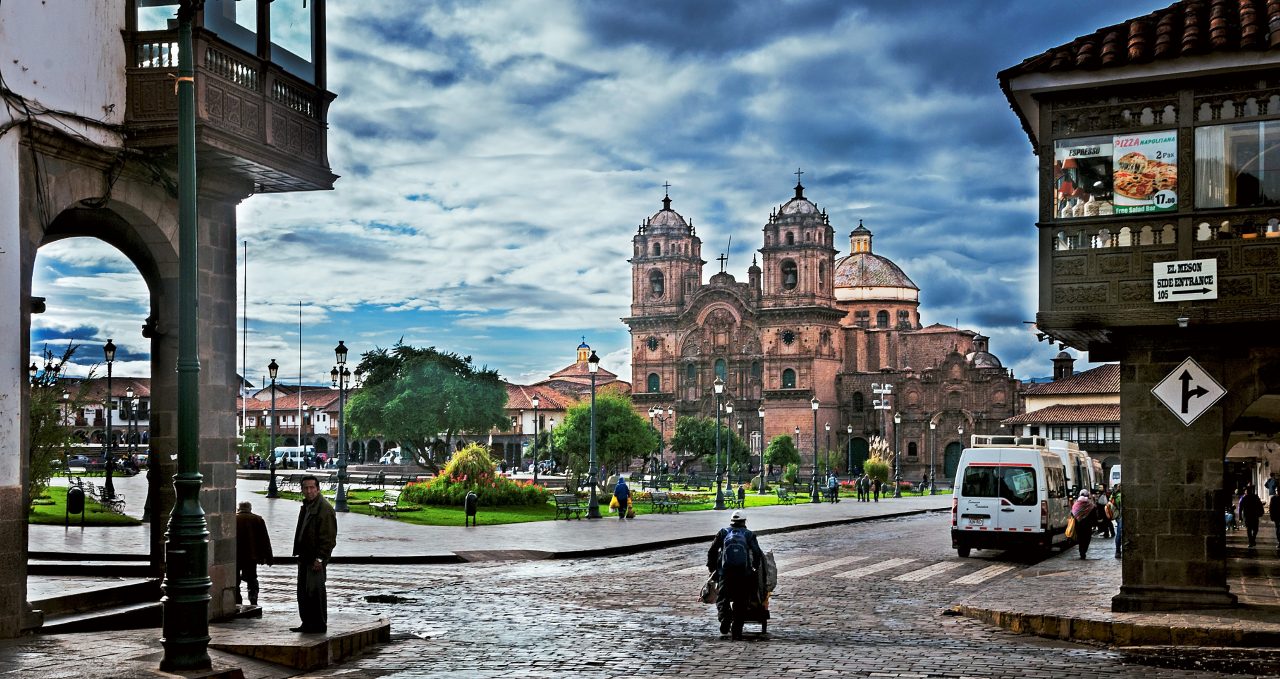
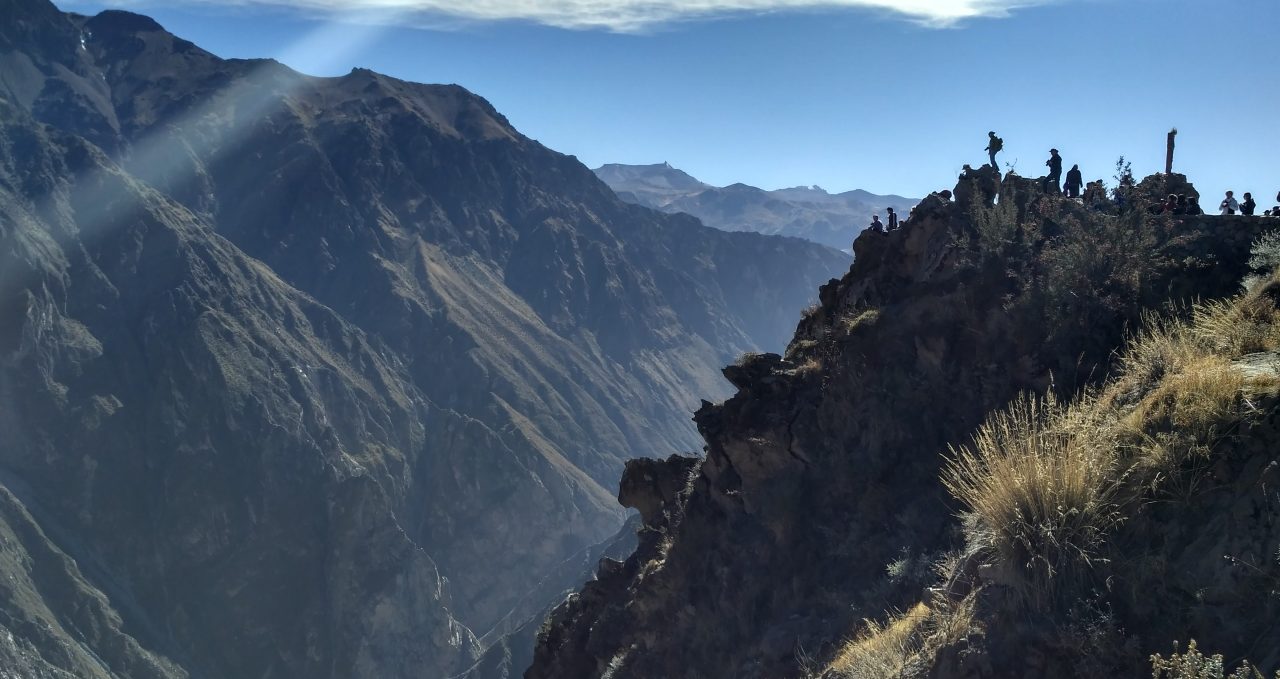
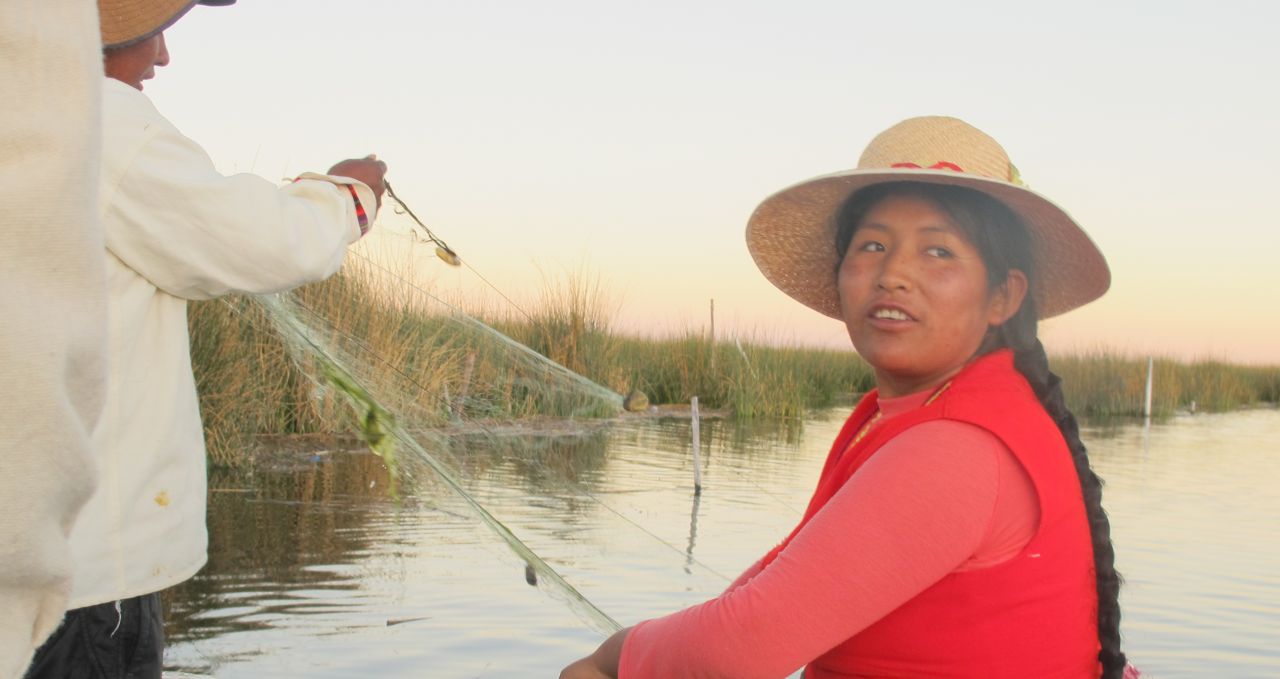
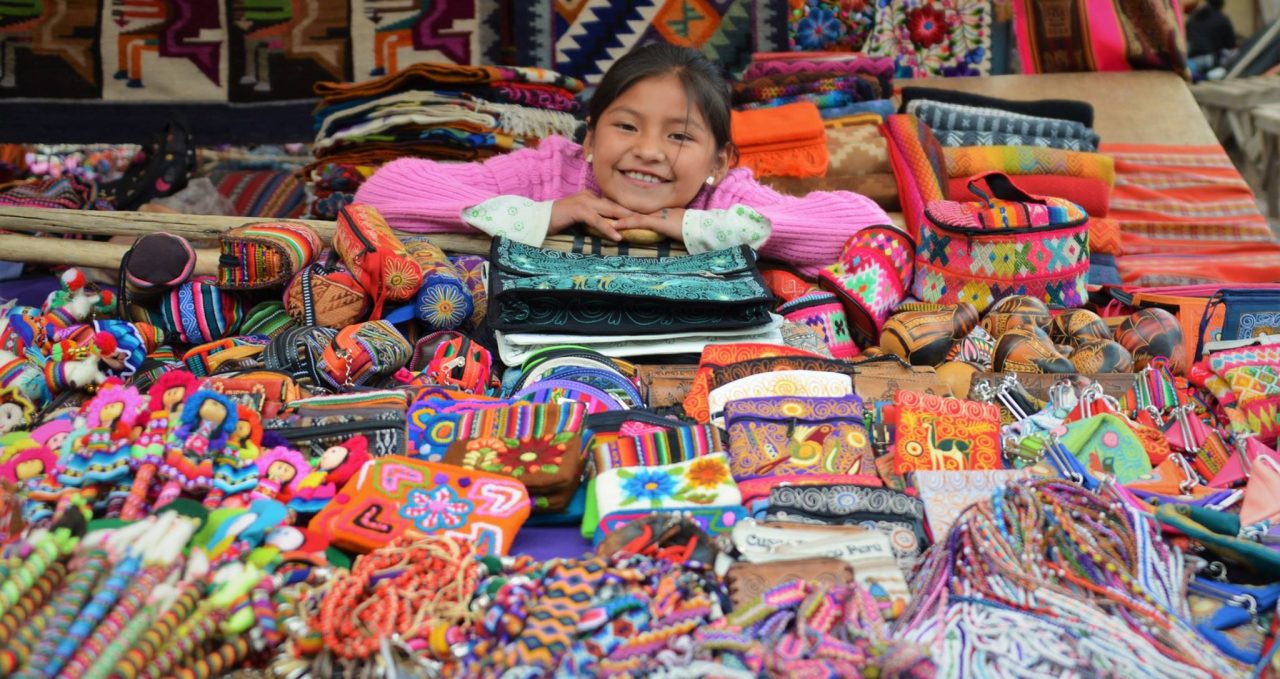
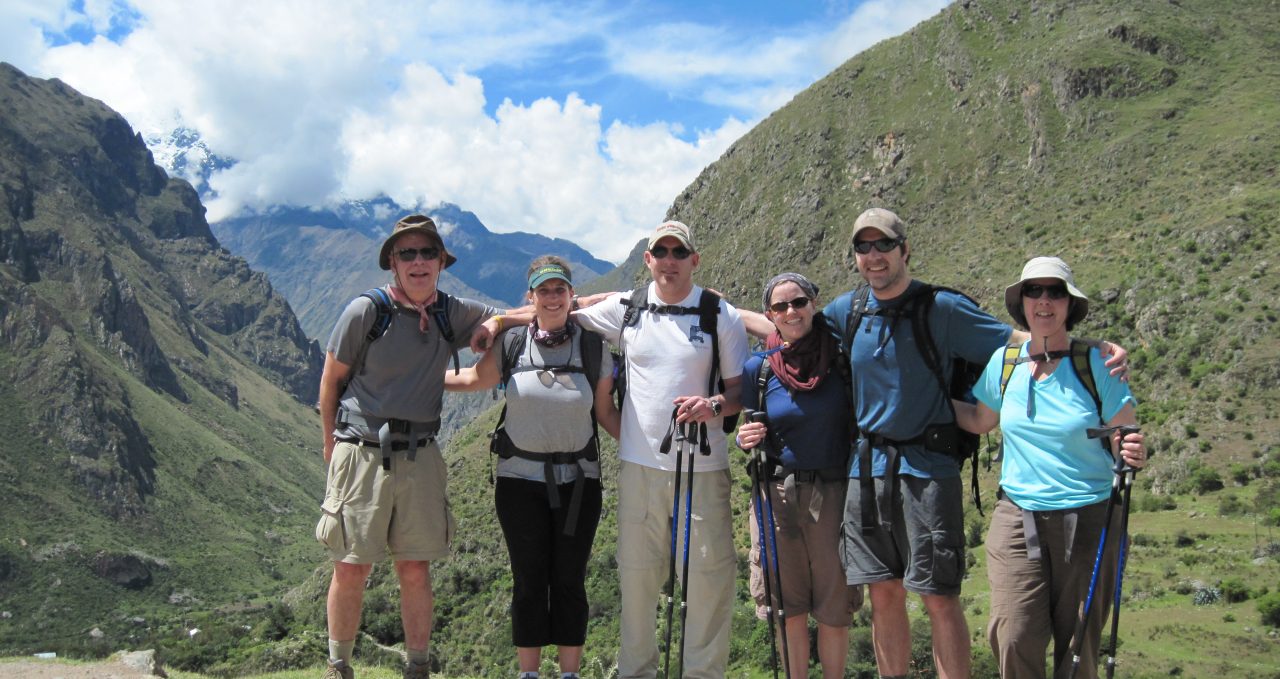
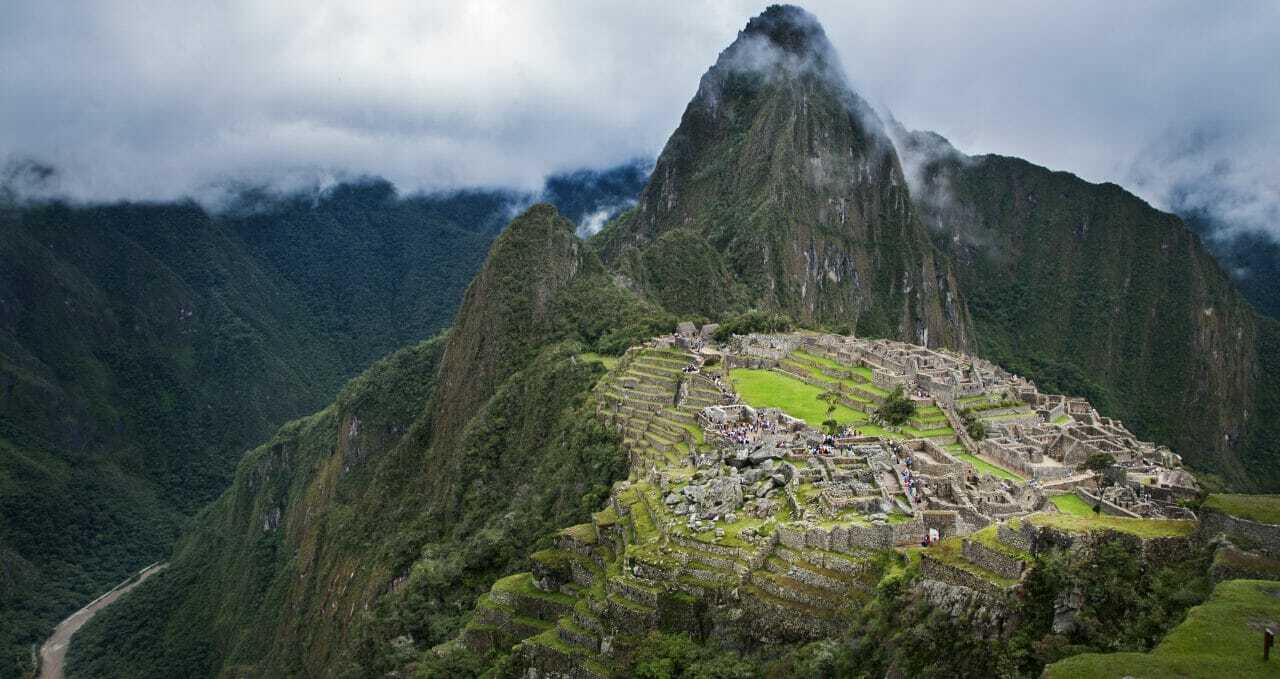
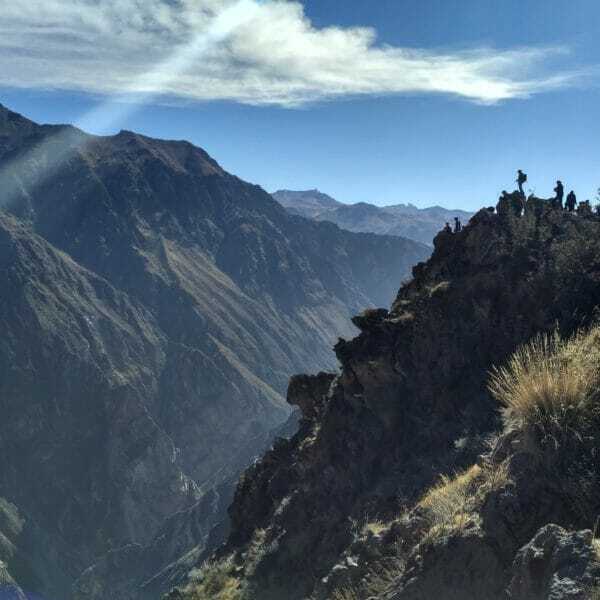
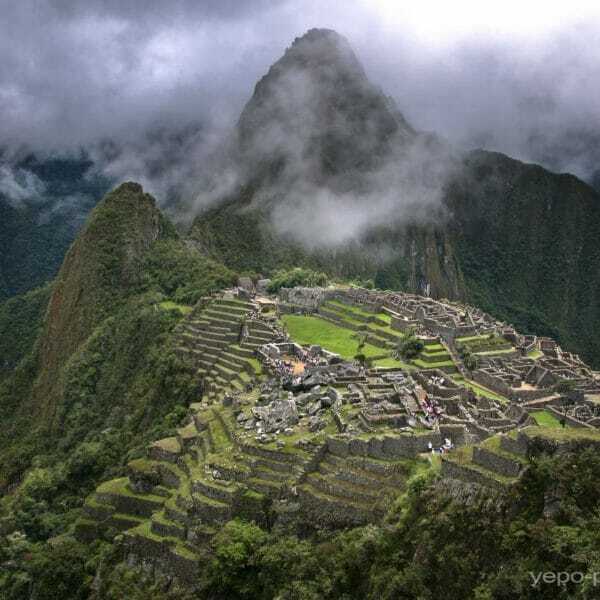
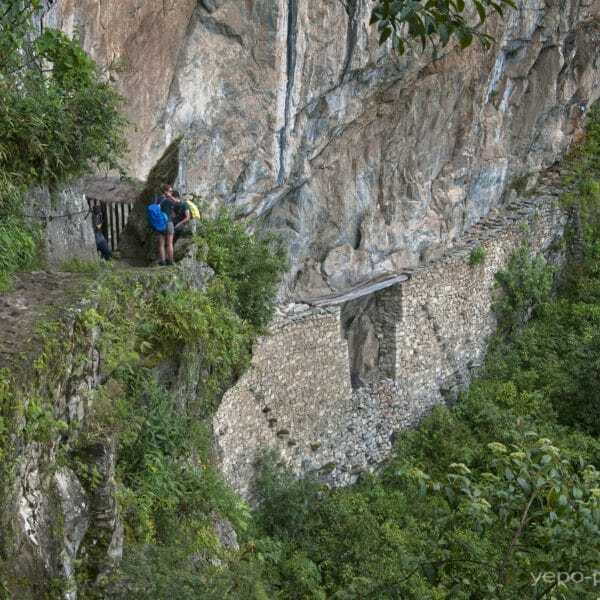
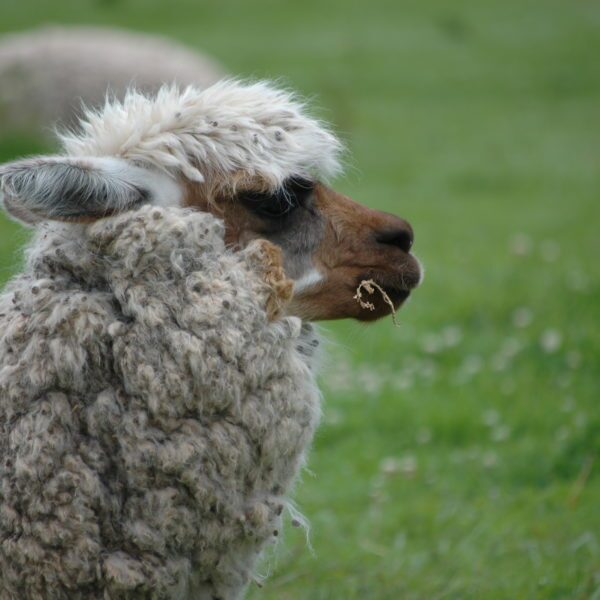
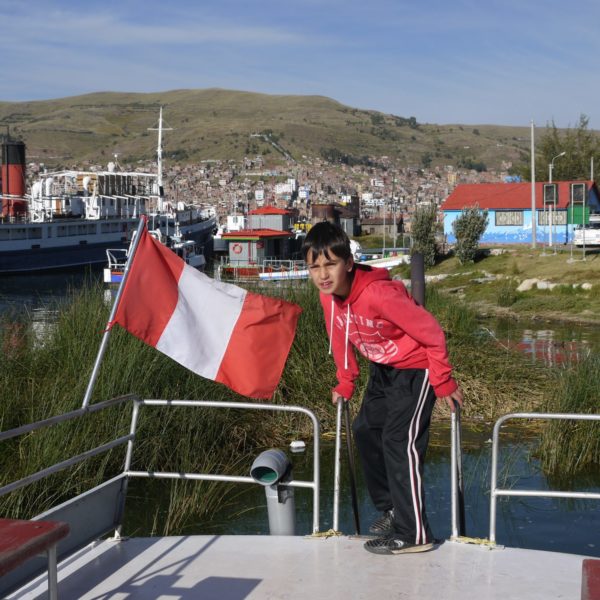
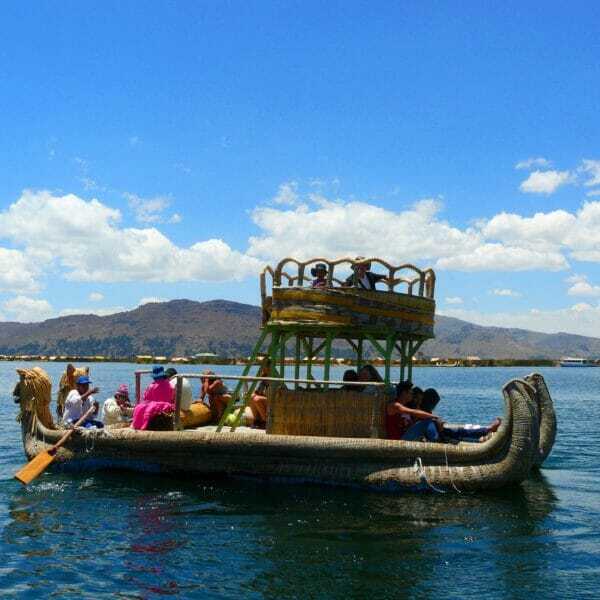
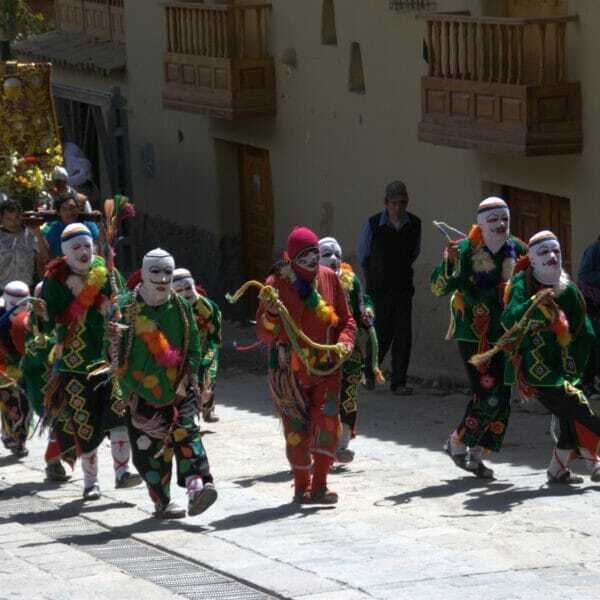
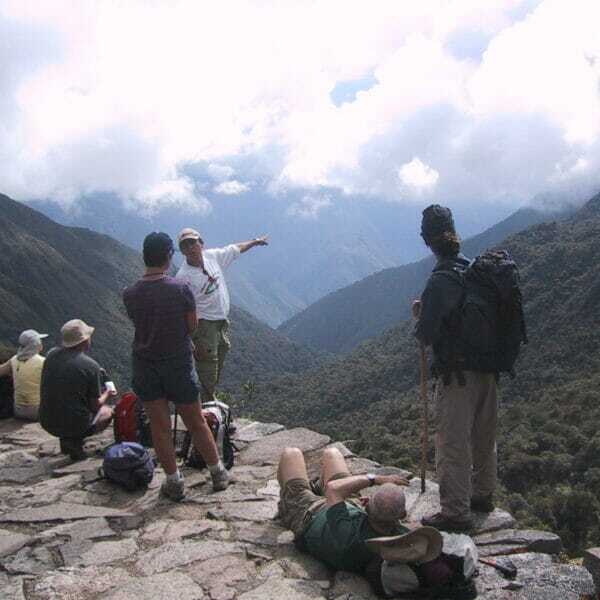
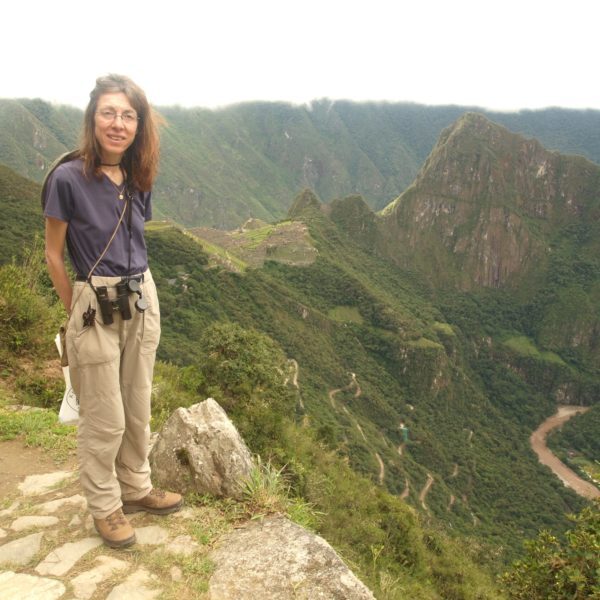
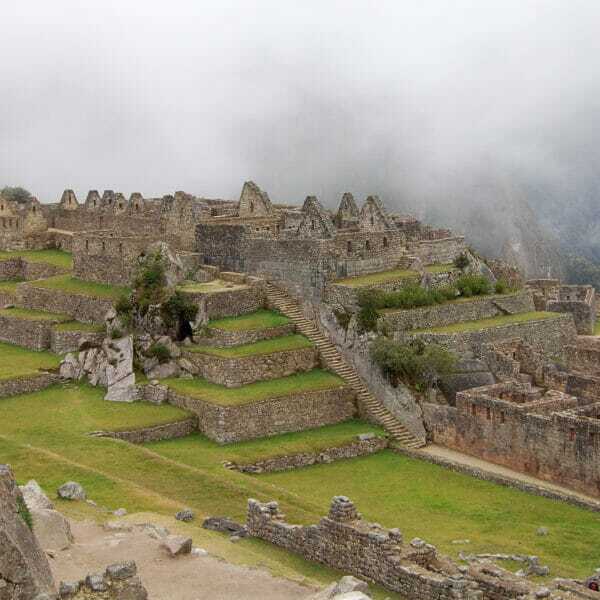
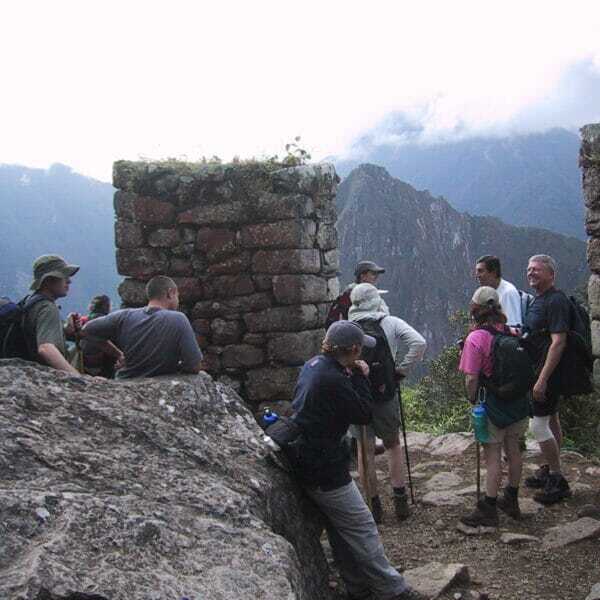
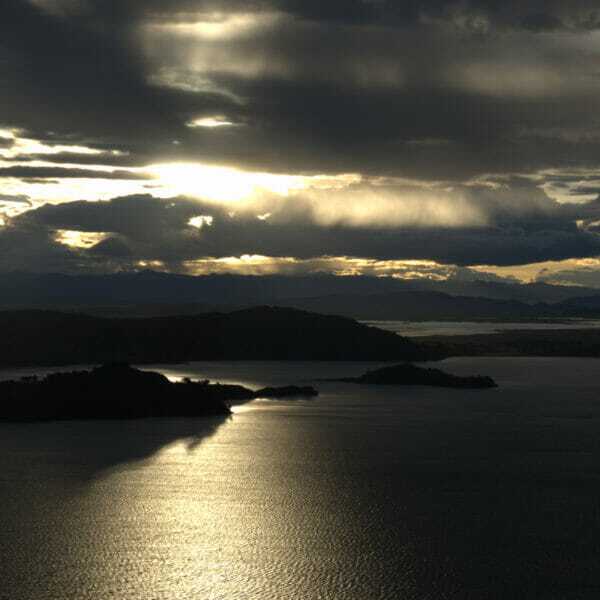
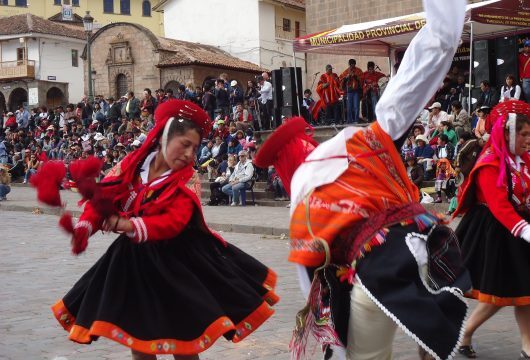
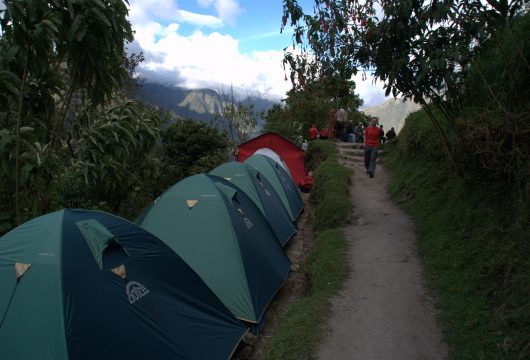
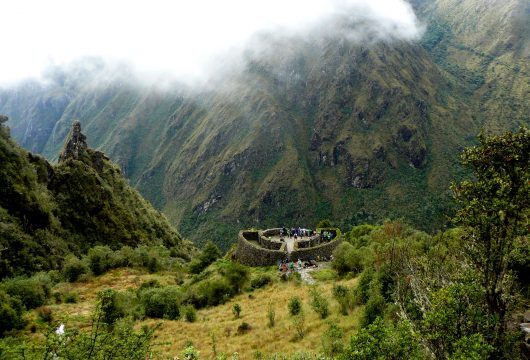
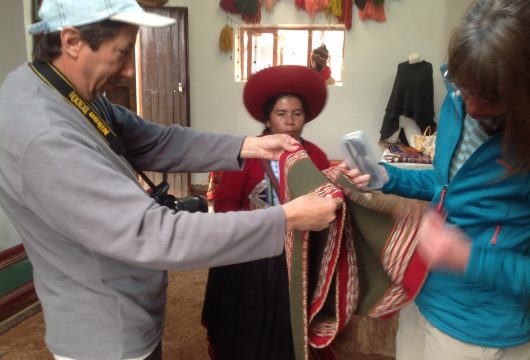
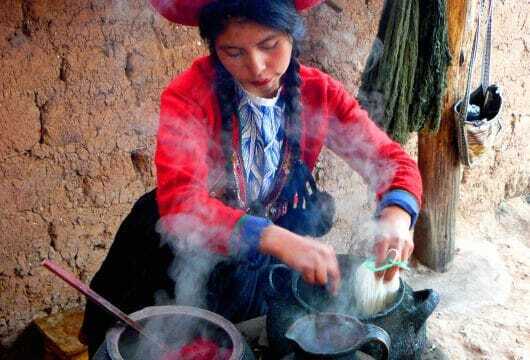
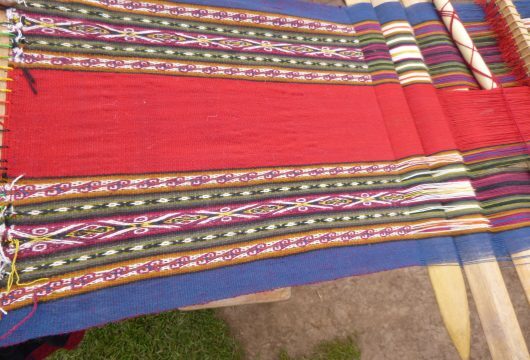
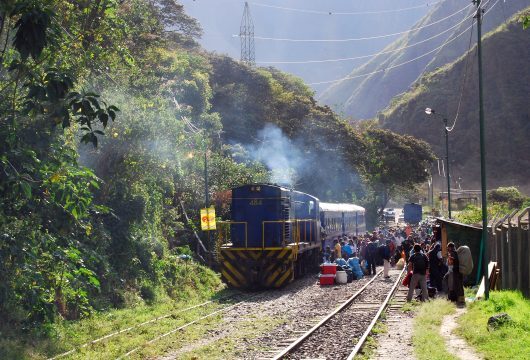
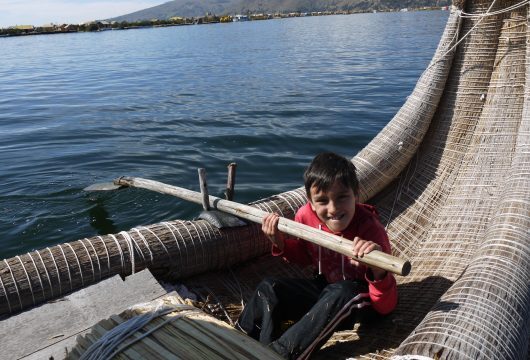
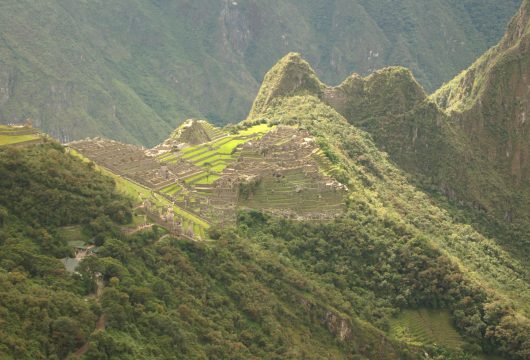
 a Tailor Made Tour
a Tailor Made Tour 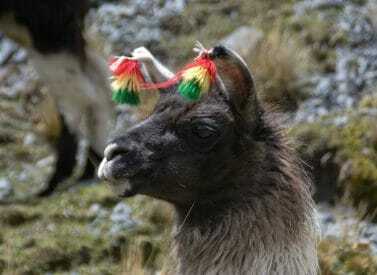

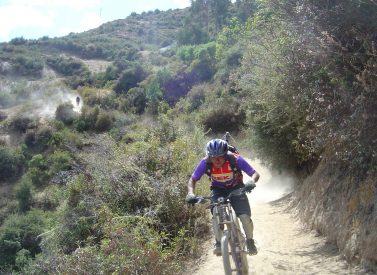
 a Group Tour
a Group Tour 